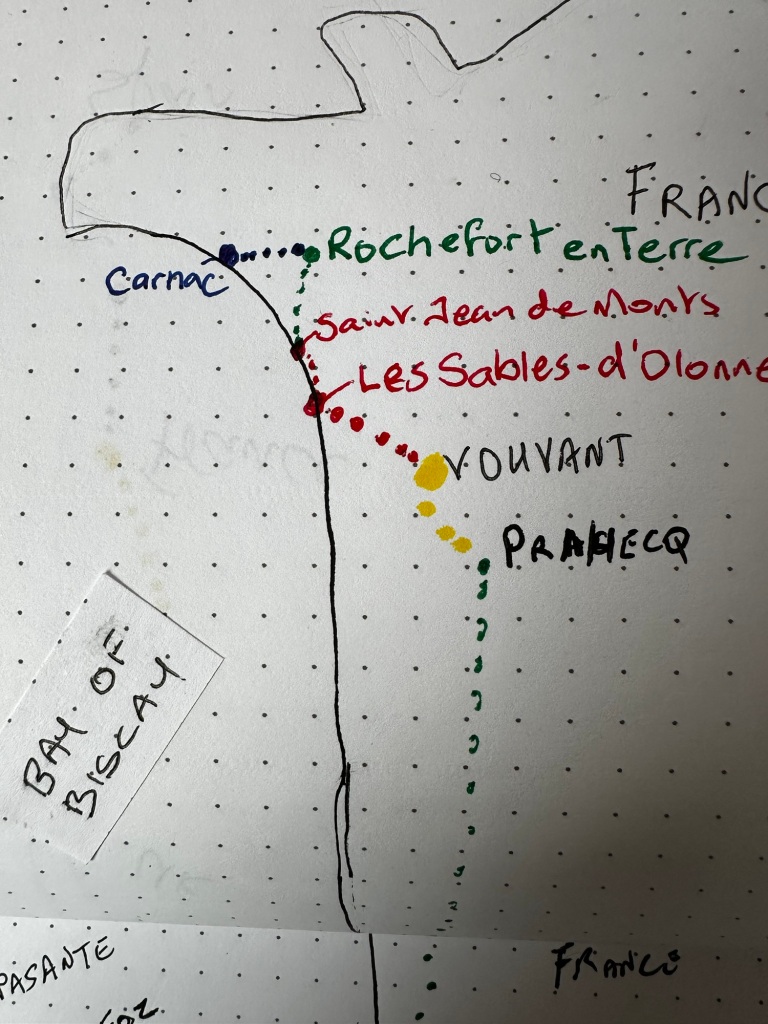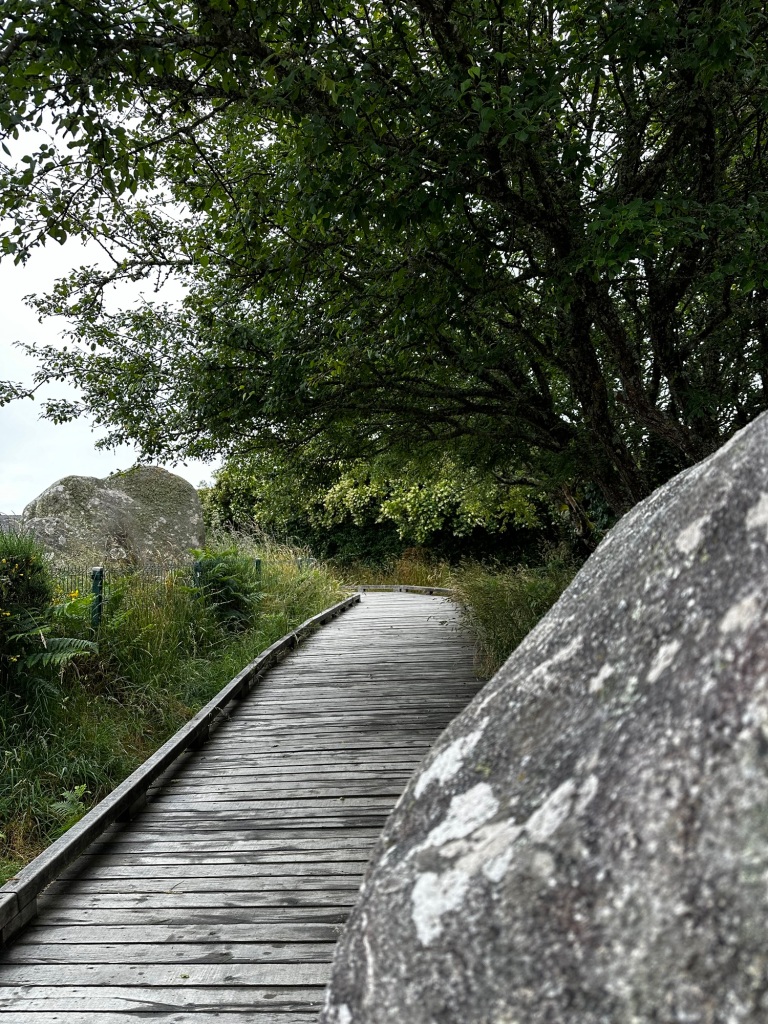
We’d been looking forward to visiting Carnac since we started this journey. The 3,000 big stones called Menhirs laid out in rows across a 4km long site outside the town is a mystery we thought they had solved and if they had we wanted to find out what it was all about.
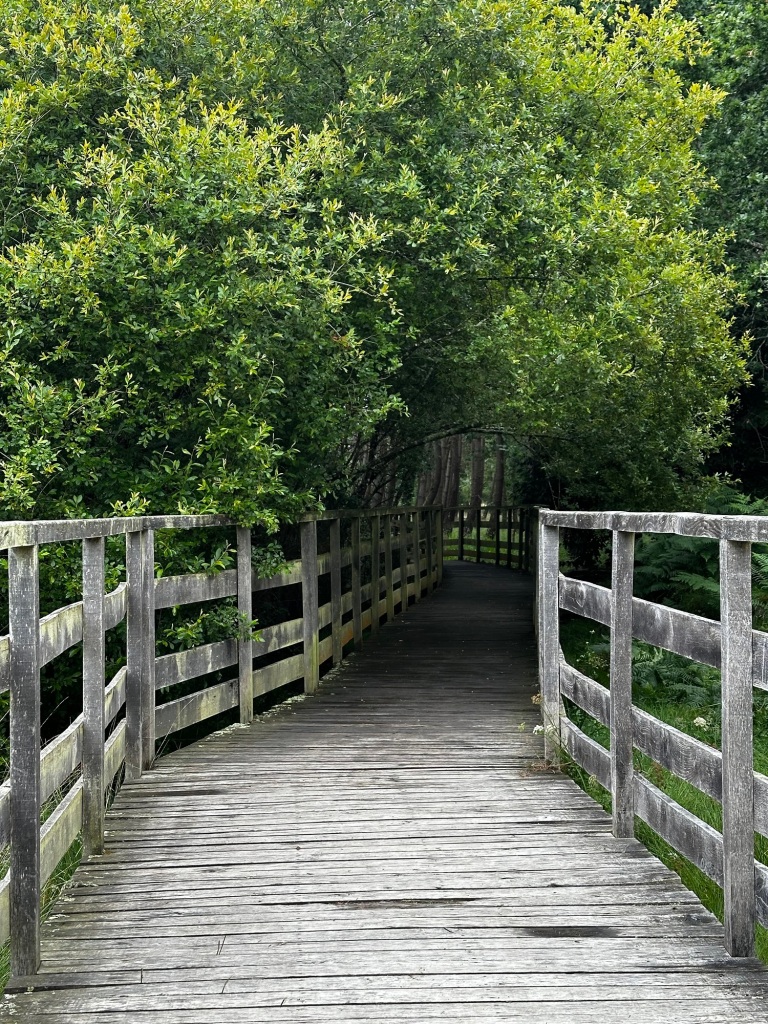
There was a free car park where motorhomes were allowed to stay overnight near one of the sections of stones. We parked and took a walk along the path. This section comprised of about a quarter of the standing stones and was surrounded by fences. We saw an exhibition of photos from visitors to the stones, some as far back as the 1940’s, at the Maison des Mégalithes (interpretive centre). The pictures were from a time before the fences were in place and people were climbing on, picnicking at and hugging, the stones.
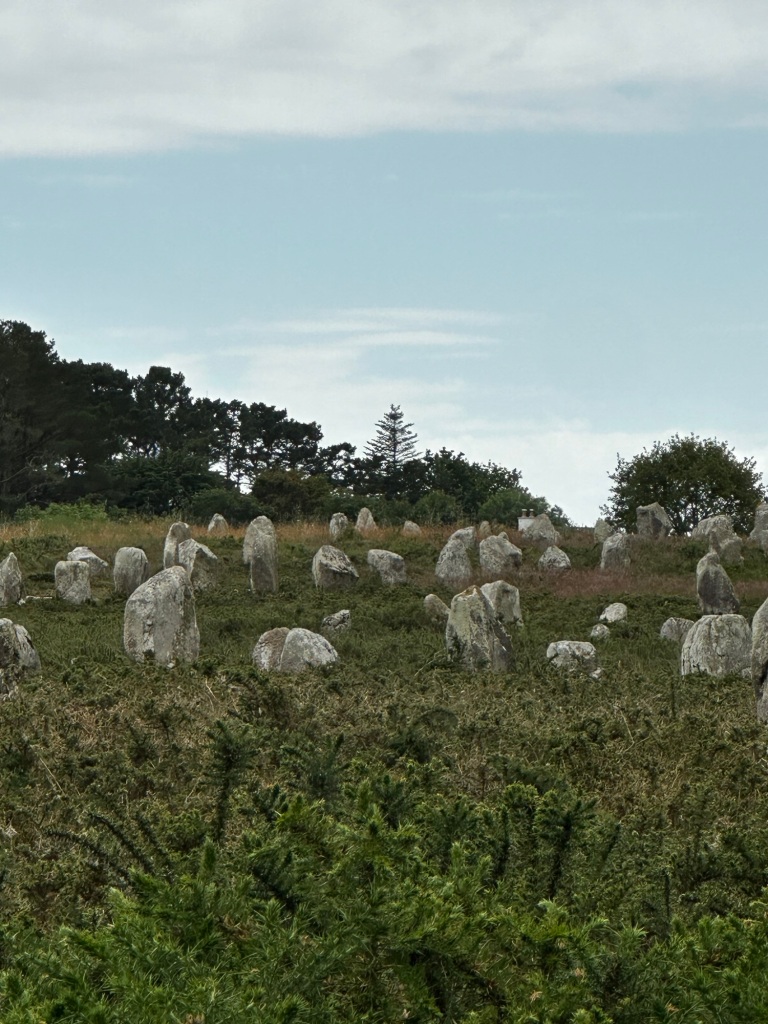
The stones were placed into position between 4,500 and 3,500 BC so at least 5,500 years ago… that’s for 250 generations they’ve been standing here. How did Neolithic man move the rocks and position them? They look very heavy. And why did they do it? No one is entirely sure why but the how is interesting. Our – if we were French – our grand, grand, grand, grand (246 times more) parents were just as creative and intelligent as we are. They had devised a system of rolling the stones along the ground on poles. Then positioning the stone into a hollow and with ropes tied around pulled the stone upright. And their best guess as to why… it might be a place for funeral ceremonies for important elders.

People have lived in this place for at least 5,500 years. The area was rich in something we take for granted – salt – and that meant the locals were rich too. The salt meant they could trade. And they did trade, including with people as far away as southern Spain (it took us weeks to get here from there so I can’t imagine how long it took back then). We also visited the Prehistoric Museum in Carnac and saw an interesting video about how they used the green stone called variscite, which came from Andalusia, to make jewellery. Variscite jewellery was found in the mound graves in this area from 5,000 years ago. Granada and Seville are in Andalusia, remembering how hot it was there I can understand why they might want salt from Carnac.
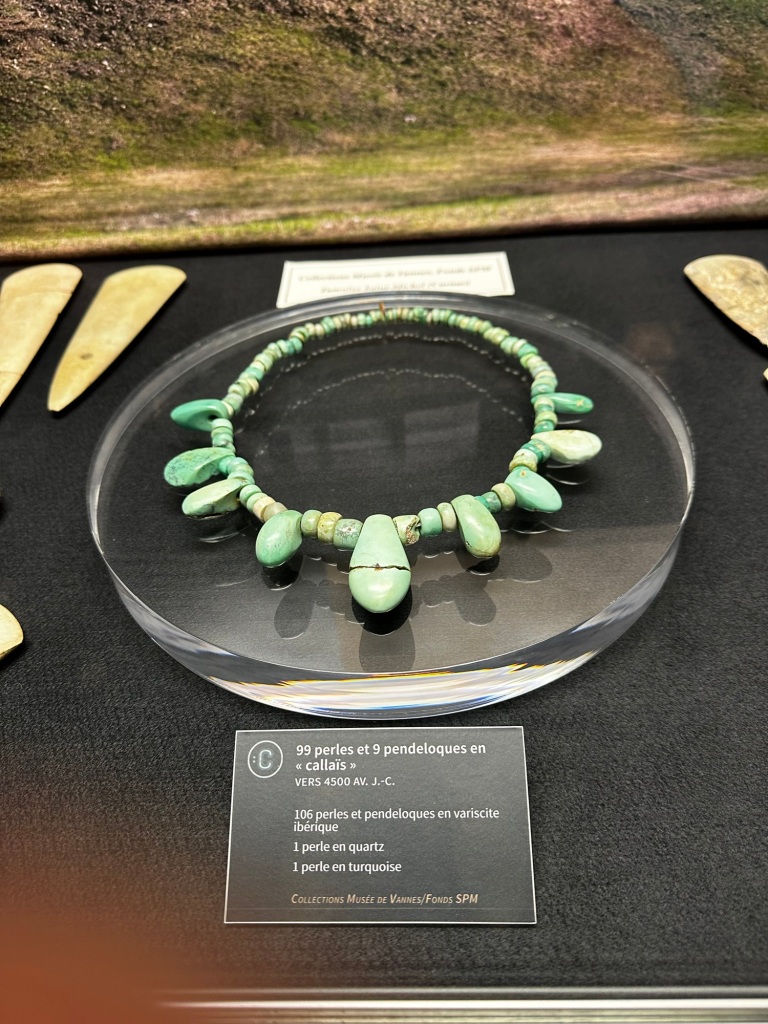
Another interesting thing I learned at the museum was that global warming began about 10,000 years ago. There are standing stones in the sea near Carnac that can be seen at low tide – they were on dry land 5,500 years ago.
